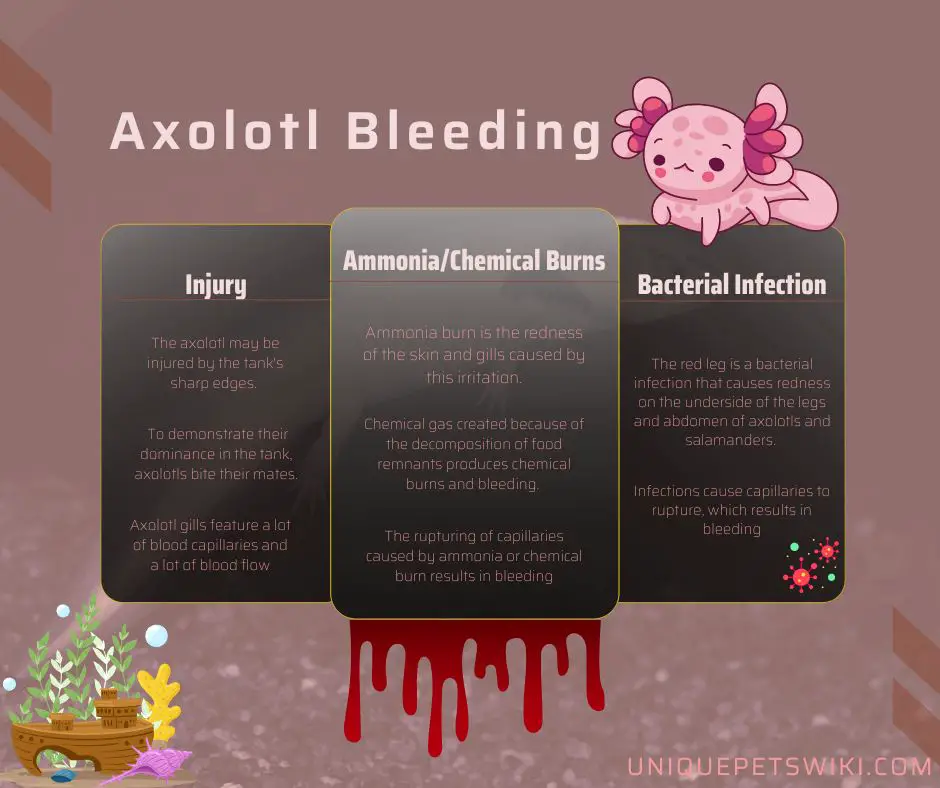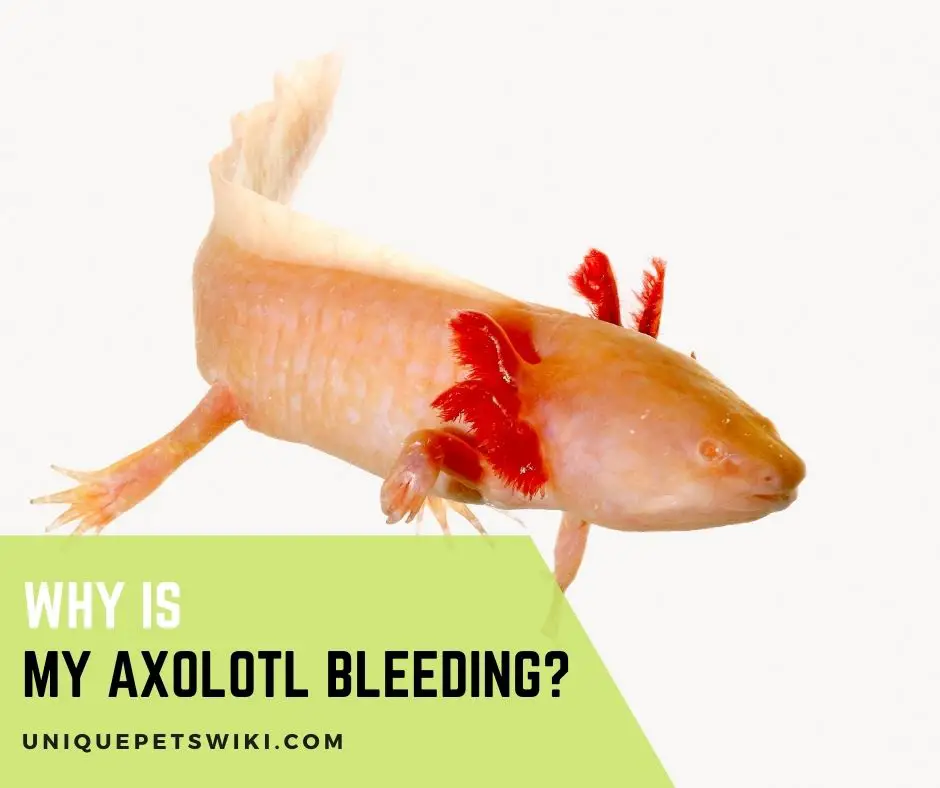Axolotls supply oxygen to their organs and tissues through the blood. Blood hemoglobin, like human hemoglobin, is vital for transporting oxygen throughout the body.
The transfer of oxygen through the blood is affected by blood loss or bleeding. So, Why Is My Axolotl Bleeding?
Axolotl owners should be aware of the causes of bleeding and anemia in their pets.
The delivery of blood and oxygen to cells and tissues must be ensured. Because bleeding or blood loss can be fatal if not resolved early.
The reader will learn about the reasons that cause axolotls to bleed in this article. The article will also inform readers about the impacts of bleeding on axolotl health.
So, keep reading till the conclusion to learn how to prevent and control bleeding in axolotls.
Contents
Why Is My Axolotl Bleeding?
Axolotls bleed for a variety of reasons. Bacterial infections, ammonia burns, and injuries can all induce bleeding.
The supply of oxygen and blood to the body’s cells and tissues is affected by bleeding. As a result, the axolotl’s body is unable to produce ATP via aerobic metabolism.
The cause of the bleeding must be identified, and the bleeding must be stopped as soon as feasible.
Because an axolotl can become anemic and die from excessive bleeding. So, don’t take the problem lightly and consult a veterinarian right away.

Injury
Axolotls can bleed if their skin or gills are injured. The axolotl may be injured by the tank’s sharp edges.
If you have a lot of axolotls in one tank, one of them can get hurt fighting another axolotl. To demonstrate their dominance in the tank, axolotls bite their mates.
Axolotl gills feature a lot of blood capillaries and a lot of blood flow. As a result, a gill injury might result in profuse bleeding.
To aid in the regeneration process, look for the wound and maintain the temperature cool. If the wound is deep and bleeding, contact a veterinarian right away.
Ammonia/Chemical Burns
To maintain the axolotl healthy, the ammonia level in the tank should be zero. When the concentration rises, the skin and gills become inflamed.
Ammonia burn is the redness of the skin and gills caused by this irritation.
Chemical gas created because of the decomposition of food remnants produces chemical burns and bleeding.
The rupturing of capillaries caused by ammonia or chemical burn results in bleeding. So, maintain the tank clean and change the water regularly.
Bacterial Infection (Red Leg)
The red leg is a bacterial infection that causes redness on the underside of the legs and abdomen of axolotls and salamanders.
Infections cause capillaries to rupture, which results in bleeding. Aeromonas hydrophila, an opportunistic bacterium, causes red leg in axolotls.
This bacterium thrives in the tank due to pollution and unsanitary conditions. As a result, it is critical to keep the tank clean by disinfecting it.
You’ll also need to see a veterinarian get an antibiotic prescription for the ailment.
What Should You Do If Your Axolotl Is Bleeding?
The most critical step is to figure out what’s causing the axolotl to bleed. You should examine the axolotl carefully and look for signs of bleeding.
It could be a bacterial infection if you notice redness under the legs or abdomen.
You must examine the water quality and maintain hygienic conditions in the tank after inspecting the axolotl’s condition.
You must administer treatment based on the injury, infection, or any other issue. If the axolotl’s condition is critical, you should contact a veterinarian right away.
API Water Test Kit
- Contains one (1) API FRESHWATER MASTER TEST KIT 800-Test Freshwater Aquarium Water Master Test Kit, including 7 bottles of testing solutions, 1 color card and 4 glass tubes with cap
- Helps monitor water quality and prevent invisible water problems that can be harmful to fish and cause fish loss
- Accurately monitors 5 most vital water parameters levels in freshwater aquariums: pH, high range pH, ammonia, nitrite, nitrate
- Designed for use in freshwater aquariums only
- Use for weekly monitoring and when water or fish problems appear
Last update on 2022-12-30 / Affiliate links / Images from Amazon Product Advertising API
Conclusion
Axolotls bleed due to injury, bacterial infection, ammonia, or chemical burn. To avoid injury while swimming, maintain the internal surface of the tank smooth.
Healthy axolotls require good quality water, a cool temperature, and no ammonia in the tank.
If you observe bleeding signs, the first thing you should do is keep the tank clean of impurities.
To maintain good water quality, you can use salt water treatment or the tea bath method. If your axolotl is bleeding profusely or the situation is severe, contact a veterinarian right once.

